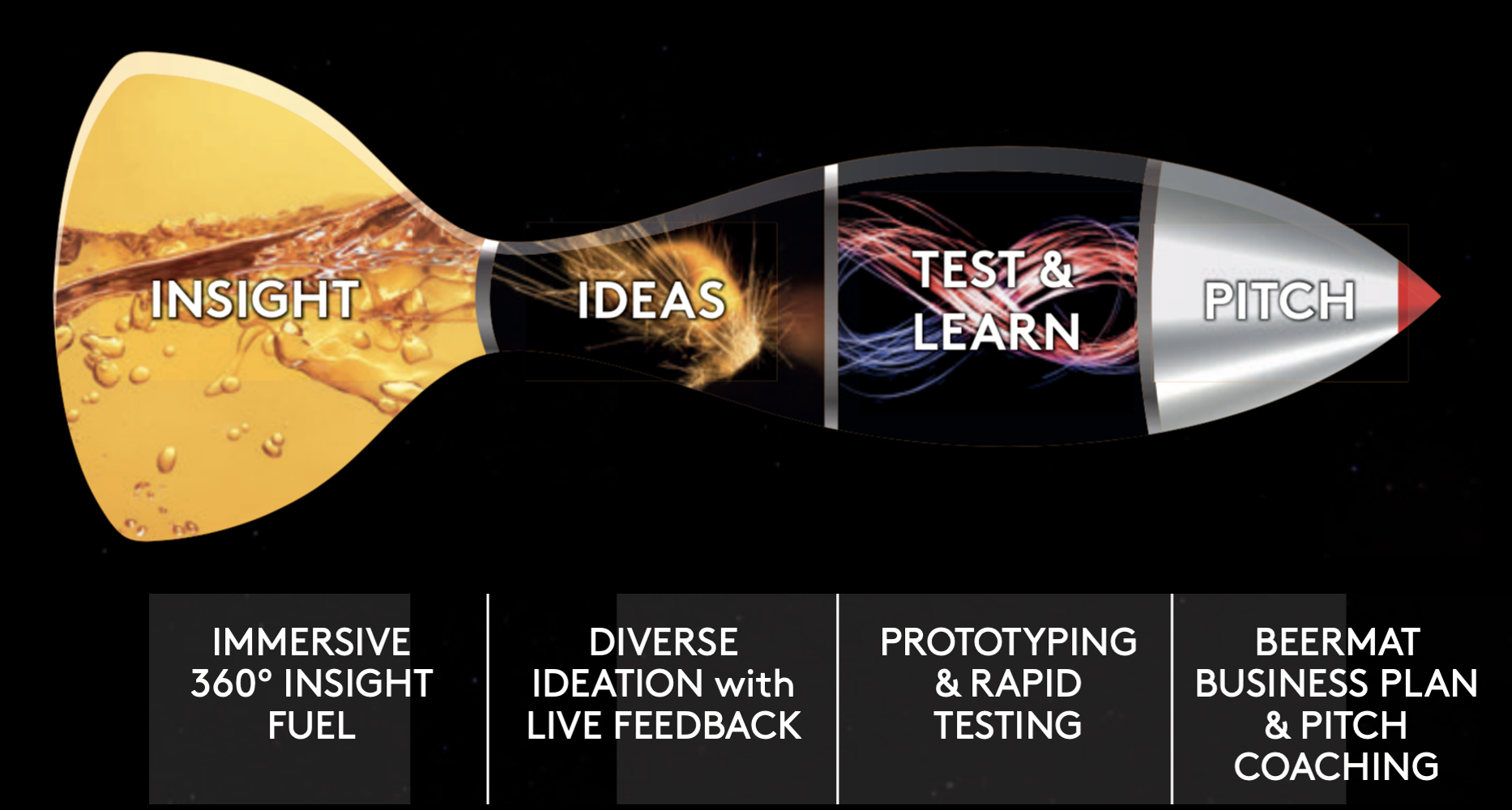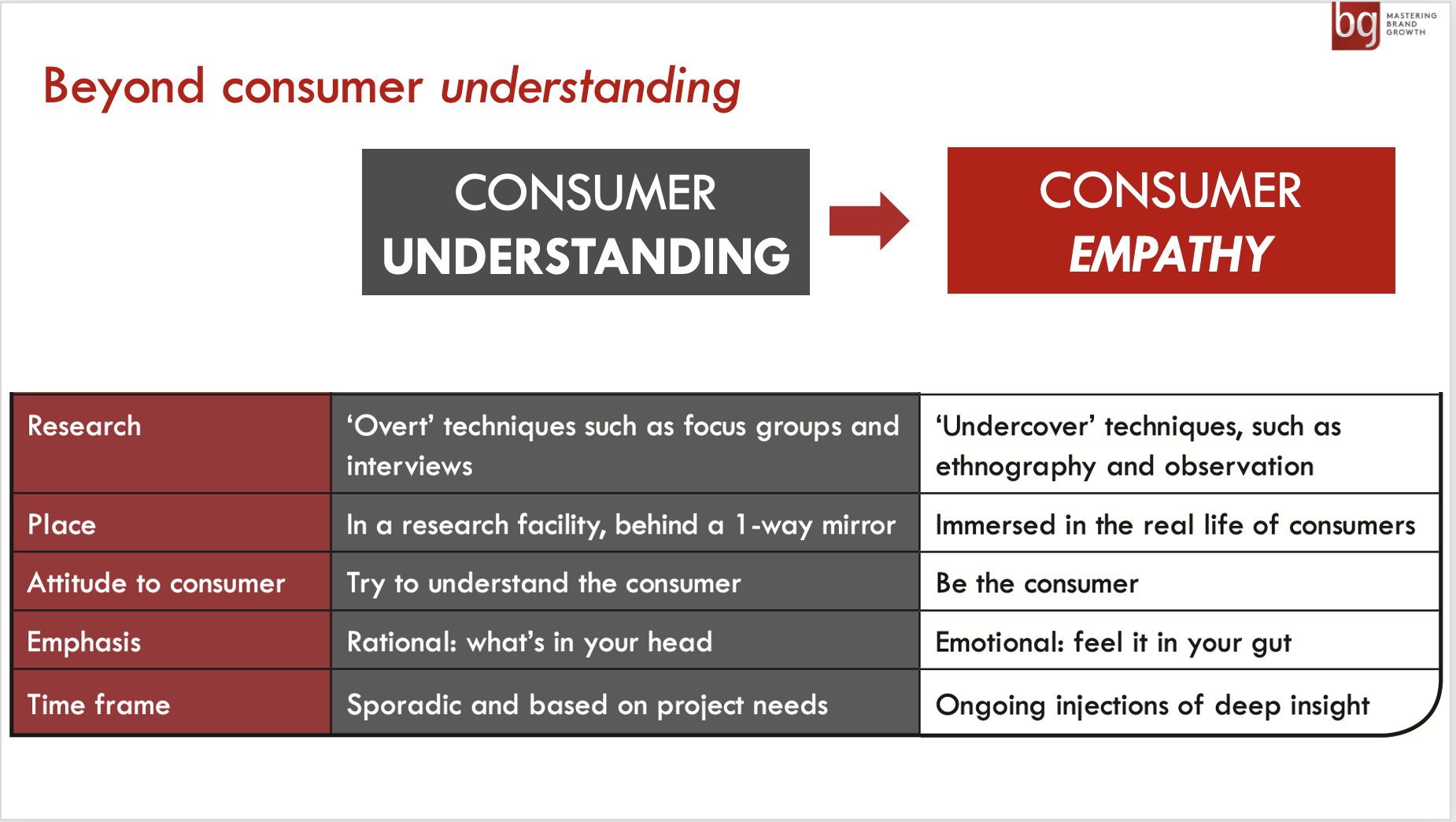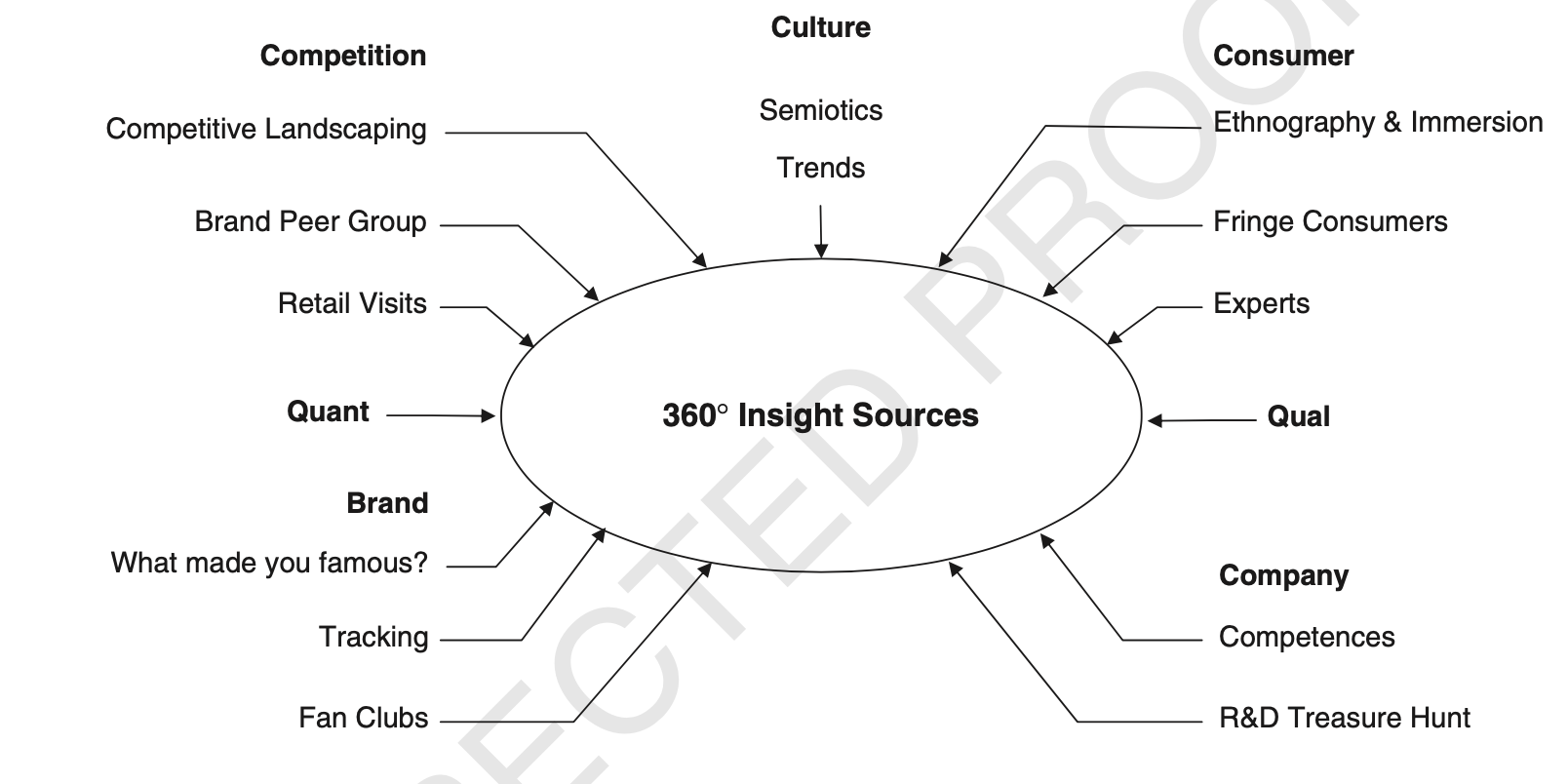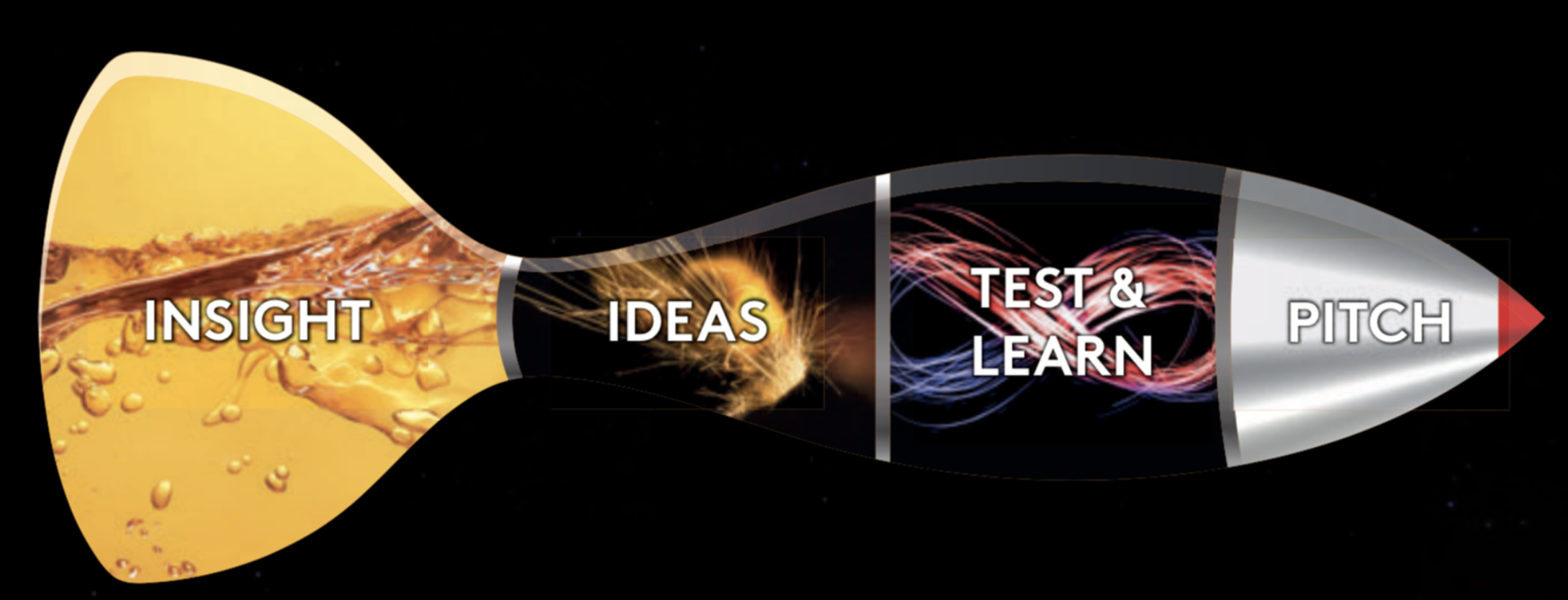Post by Diego Kerner, Managing Partner for Latin America and Head of 360º Insight.
I recently finished a challenging regional innovation project for a global Snack company that ended on a high. Great ideas with high consumer purchase intent. A happy client with a happy boss. The project had a bumpy start, with a broad range of stakeholders to align on the scope, deliverables and process. This made the satisfaction of a job done well bigger and also generated lots of valuable learning. I decided to capture this learning to share with you.
Now, there isn’t anything new or revolutionary here. Nor do I have a magic recipe for guaranteed success. Rather, my objective is to help you raise the odds of generating winning innovation ideas. The learnings are built on brandgym’s ‘Rocketing’ innovation process (below), developed by our Head of Invention David Nichols.

I’ve divided these learnings into two blogs. This first one is focused on the WHAT: the content and how to maximize the chances of getting winning insight-based ideas. The second blog will talk about HOW to trigger the most effectives attitudes and behaviours from the team to drive innovation.
Let’s get started with learnings on what how to inspire creation of ideas that consumers love.
1. Get 110% alignment
Don’t progress a single inch along the project without having a crystal clear and fully aligned Project Brief. As part of this process, interview senior stakeholders to ensure full alignment and no unwanted surprises later in the process. This brief explicitly define the following:
- Trigger for the project (the opportunity or issue you’ve identified)
- Specific objective/deliverables: not too narrow so it implies a solution (e.g. “Develop a kids’ milk providing energy from macha”) neither not too open (e.g. “To develop a kids’ milk-based product”)
- Target consumer and/or needstate/occasion)
- Scope: geographic, category, brand, channel, etc
- Any constraints (eg related to R&D, legal, etc)
- Timings and participants
2. Go beyond consumer understanding to consumer EMPATHY
We recommend going beyond simply understanding the consumer to building consumer empathy. This requires a more immersive, in-depth approach (see below). You don’t just think about the consumer you build a gut feeling about their needs and wants. See the visual below from our brandgym Mastering Brand Growth program training.
Spend time with consumers, by shadowing the process they use to choose, buy and use a product. Ask them to speak up to explain what they are thinking and feeling. Don’t talk or judge, just observe and learn!
To go a step further, BE the consumer. Walk in their shoes, live their life for a while e.g. shopping or using the product/service yourself.

3. Use a 360º approach to get fresh, rich insights
if consumers were able to perfectly articulate what they want, we’d all have to look for a new job. However, things are not that easy, as much of what drives human behaviour needs to be uncovered. To do this, we need to enrich our knowledge with a broad set of insight sources. We call this ‘360 Insight’, a learning process that involves opening different ‘windows’ on the problem:
Consumers: talk to consumers, read about them in secondary research, consider talking to ‘extreme users’ (passionate haters/rejecters) to get an amplified perspective.
Company: squeeze out all the existing information in the company about the brand, the business, the competition. Spend time with R&D to understand what new product technology is in the pipeline.
Culture: decode what is happening in culture, using semiotics or AI-enabled cultural decoding
Consult experts: from a broad range of areas that go beyond just the product category. For example, on a deo project you could talk to dermatologists about the underarm skin or to anthropologist about the meaning of odour in human history
Category jumps: analyze the benefits offered by adjacent categories. Using the deo examples again, what role does menthol chewing gum play in social acceptance?
Cluster your findings in 4-5 Innovation Platforms, each with potential ways to solve the opportunity/issue identified in the brief. These platforms then serve as springboards for idea generation.

4. Start ideating way before any workshop
A common error on innovation projects is to pin all your hopes on a single workshop. Even worse, is turning up to such a workshop with no insight ‘fuel’. The 360º insight approach above should help avoid the latter problem. But, don’t wait until the workshop to start ideating.
Initiate the idea generation process early so you came to the workshop with starter ideas to build on. Typically, we assign the Innovation Platforms described above to different sub-teams with a brief to come up with ideas. Three tips for this:
- Provide specific creative stimuli to inspire ideas (e.g. an example from another adjacent category)
- Keep it simple: just ask for a 1-2 line idea, a title and a drawing or image
- Stimulate a bit of competition among the teams e.g. offer fun prizes related to the topic!
5. Build your creative network
At the brandgym we use an approach called ‘Dreamworks’ on projects. We tap into an extensive, global network of creative people from diverse backgrounds. We ‘curate’ a hand-picked team for each project, in the same way a movie producer puts together a talented team for a film. This way, we keep overheads down, stay agile and tailor the team based on the brief.
Each partner has their own Dreamworks team. In my case for Latin America, it’s a bunch of highly creative and at times highly crazy people including a chef, a poet, a sport journalist, a magician, a visual artist, an amateur actor and a scientist.
In conclusion, getting clear alignment and rich insight from multiple sources to inspire several teams should boost your chances of creating winning innovation ideas. Tune in next week for the second post on HOW to trigger the most effectives attitudes and behaviours from the team to drive innovation.
